Abstract
We have recently proposed an approach to malaria control based on immunization of the host against extracellular malarial gametes, the stage in the mosquito guts, in order to block transmission by the mosquito vector. Our studies with avian and primate models have demonstrated that immunization of the host with extracellular gametes totally suppresses infectivity to the mosquito of a subsequent blood meal. Gametocytes within the erythrocytes are unaffected by the immunity, since resuspending the gametocytes in serum from normal nonimmune animals restores their infectivity to mosquitos. Immunity is mediated by antibodies that are ingested with the blood meal. These antibodies interact with extracellular gametes and prevent fertilization (the fusion of male and female gametes). Thus the infection in the mosquito is blocked, and in this way transmission is interrupted.
Full text
PDF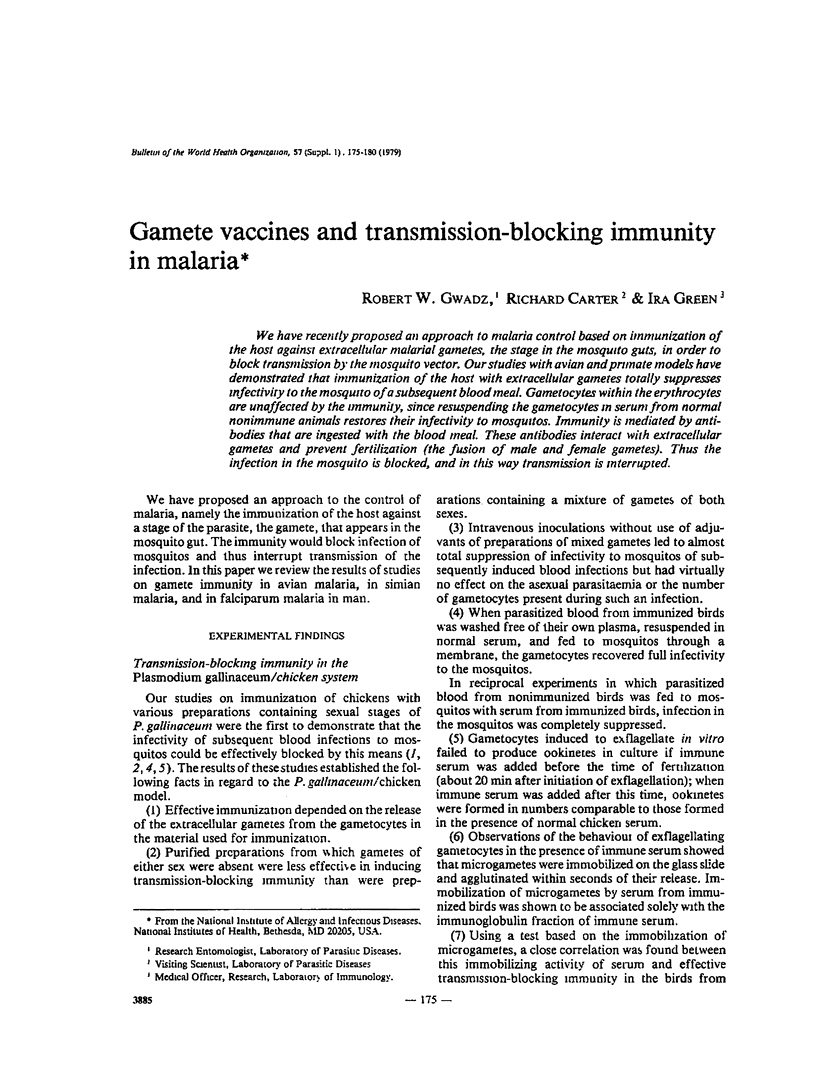
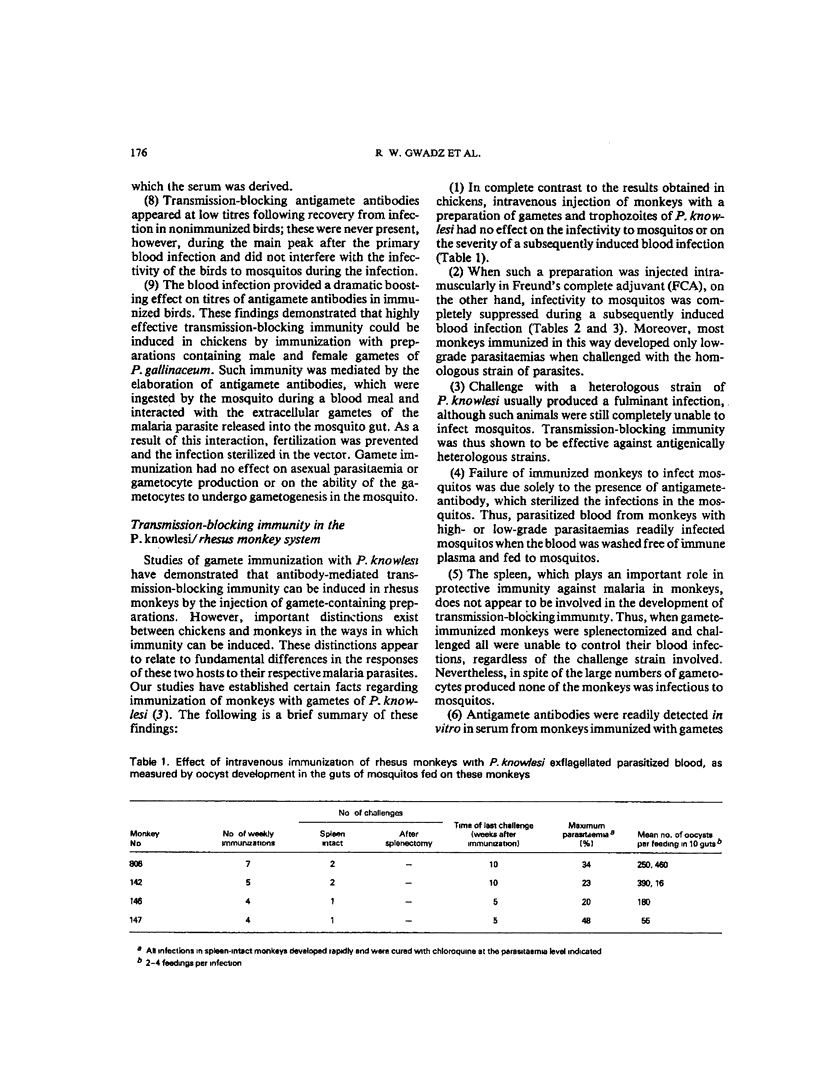

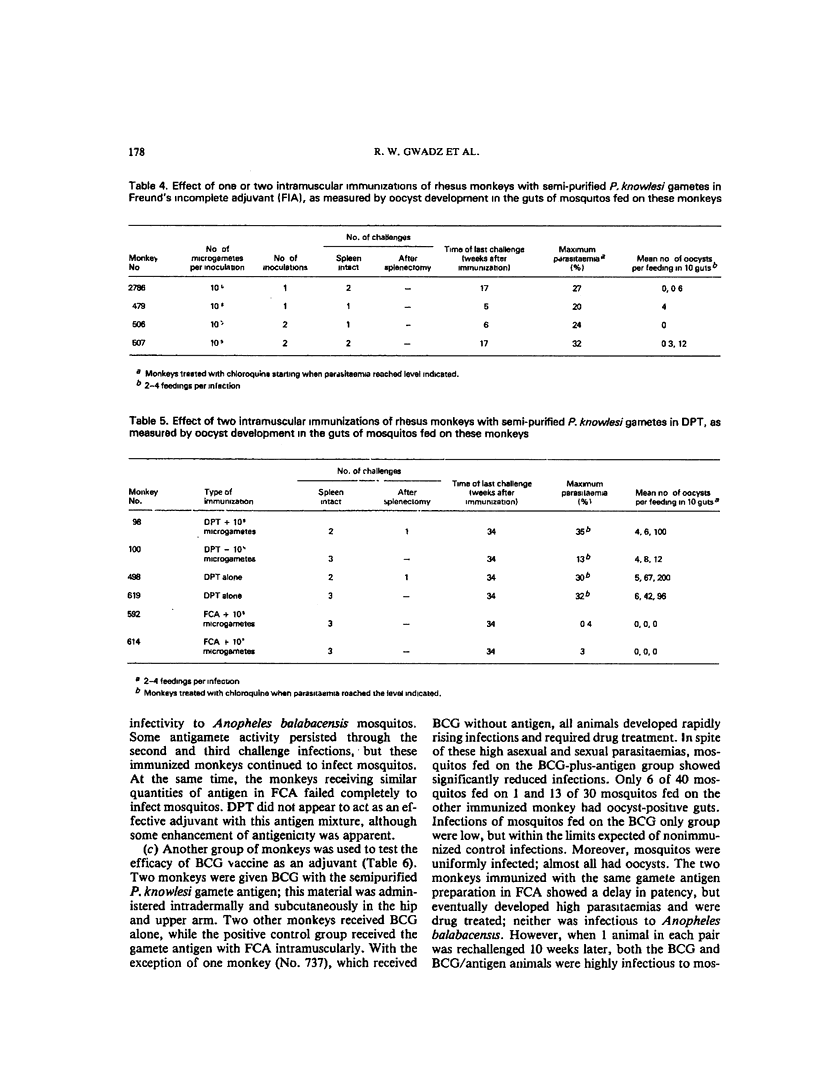
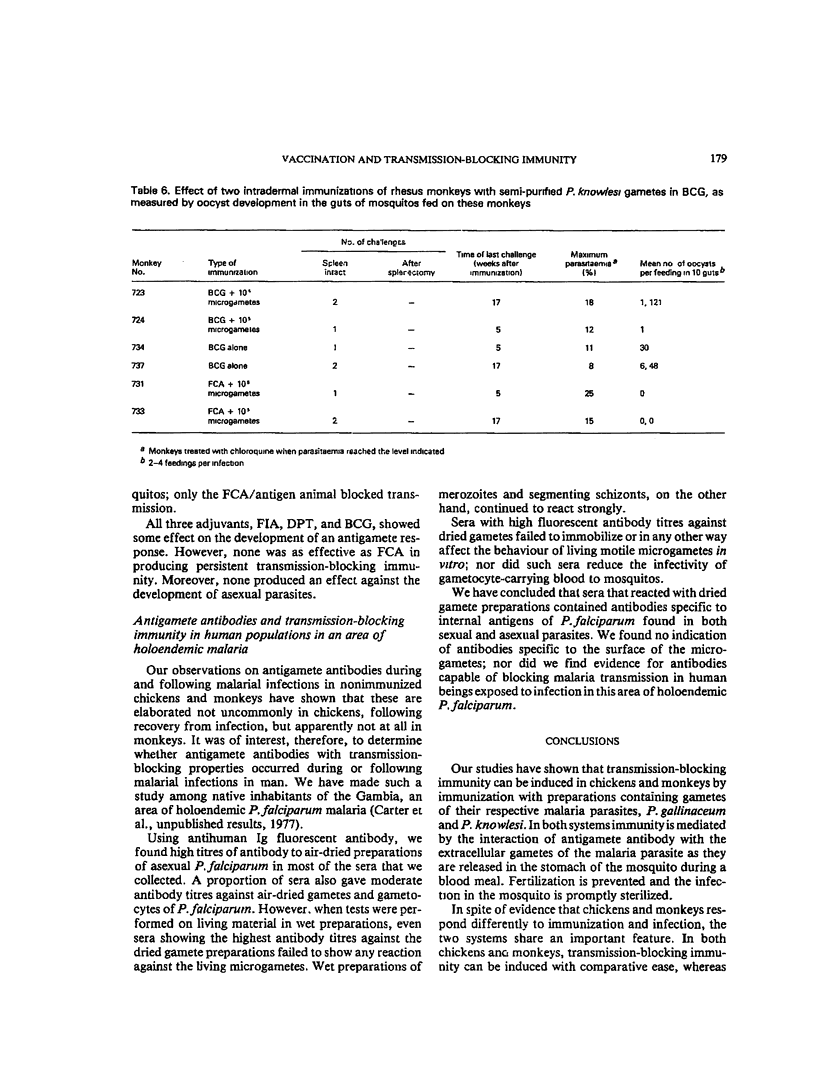
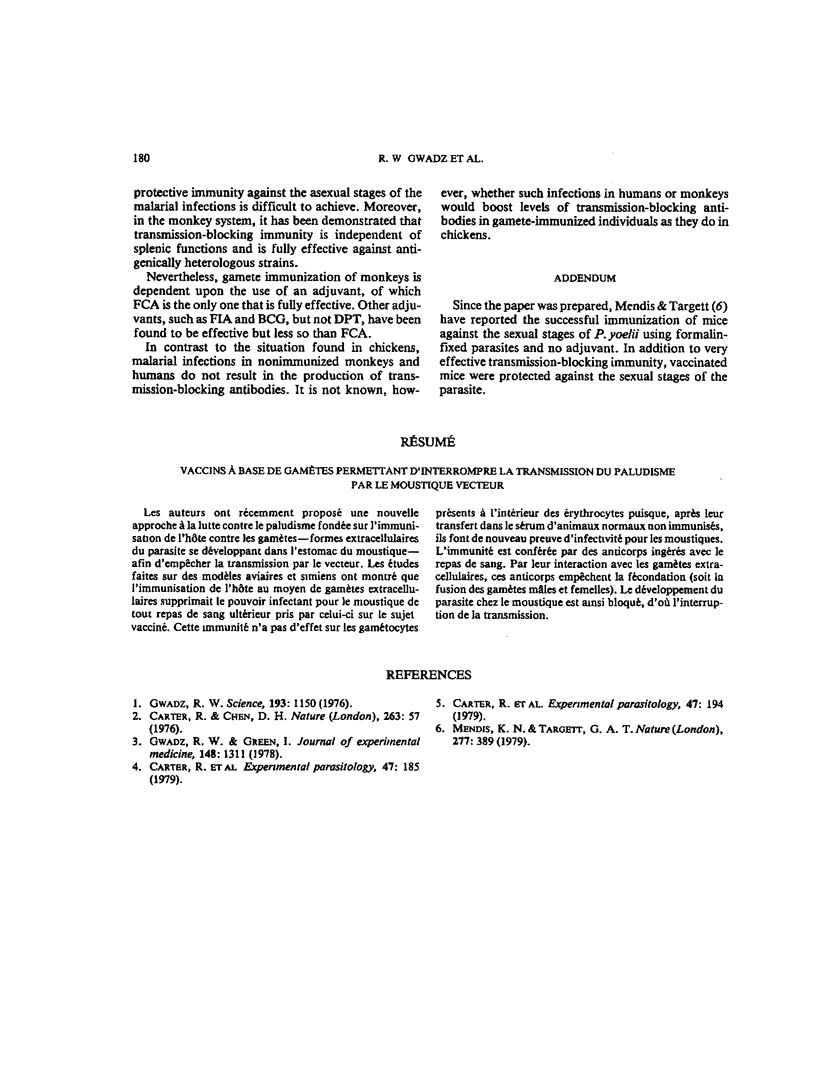
Selected References
These references are in PubMed. This may not be the complete list of references from this article.
- Gwadz R. W., Green I. Malaria immunization in Rhesus monkeys. A vaccine effective against both the sexual and asexual stages of Plasmodium knowlesi. J Exp Med. 1978 Nov 1;148(5):1311–1323. doi: 10.1084/jem.148.5.1311. [DOI] [PMC free article] [PubMed] [Google Scholar]
- Gwadz R. W. Successful immunization against the sexual stages of Plasmodium gallinaceum. Science. 1976 Sep 17;193(4258):1150–1151. doi: 10.1126/science.959832. [DOI] [PubMed] [Google Scholar]
- Mendis K. N., Targett G. A. Immunisation against gametes and asexual erythrocytic stages of a rodent malaria parasite. Nature. 1979 Feb 1;277(5695):389–391. doi: 10.1038/277389a0. [DOI] [PubMed] [Google Scholar]


